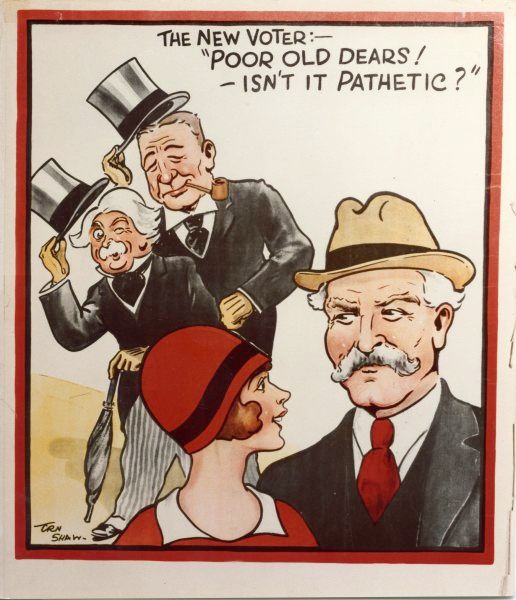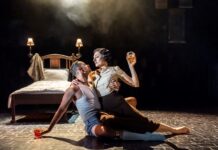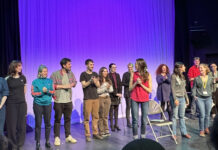As Britain prepares to go to the polls, the team at People’s History Museum (PHM) in Manchester has been looking at the objects in its collection that give a fascinating insight into some of the unique aspects of general elections; from posters and pamphlets to rosettes and merchandise.
The galleries at the national museum of democracy vividly tell the story of British democracy.
In the weeks that lead up to the general election a visit to PHM is a reminder of the stories of those who championed for change, and how long and hard fought the fight for the right to vote was. The museum is home to the country’s largest collection of campaign, political and election material and uses this to inspire visitors and to continue the quest for a fairer world for all.

Additional collection and archive objects relating to historic general elections will be on display throughout the museum from Thursday 6 June to Monday 30 September, with some of these forming part of a General Election Trail.
Polling stations are an instrumental part of any election, but they haven’t always been. Until 1872, and the introduction of the secret ballot, people would cast their vote orally and the choice would be recorded in a poll book. These were often rowdy occasions and on the galleries and in the collection at People’s History Museum you’ll see cartoons that depict such scenes. As the franchise grew, so too did calls for secrecy. The system that was adopted, of polling booths and standardised ballot papers marked with an X, came from Australia where it had been in place since the 1850s.
There have been very recent changes in the way that we vote with the introduction in 2022 of the need for photo ID. The system of voter ID has been in operation in Northern Ireland since 1985; with the requirement of photo ID added in 2003. Many believe that this has a disproportionate effect on those with lower income, disabled people and those from minority ethnic backgrounds.

William Bowen was standing as a Labour candidate in Newport, South Wales in the 1918 general election. This small hand bill includes the offer of a lift to the polling station.
At the time, having a ride in a car was a real treat so this was a very enticing offer for voters! Despite this, Bowen lost.
This is a card for the Labour Party candidate for Bury in the 1923 general election. The election was held on 6 December and there would not be another December general election until 2019.

The fact that the polls close at 8.00pm is of interest, with the current hours of 7.00am to 10.00pm having been in place since 1970.
The secret ballot that became law under the Ballot Act of 1872 saw the introduction of ballot boxes. The very first was used in a by-election held in Pontefract that same year. At this time they were wooden boxes that were sealed with wax to ensure they had not been tampered with.
Throughout the galleries at PHM ballot boxes are used to share milestone moments in political history, starting with the Reform Act of 1867 that gave some men the vote for the first time, based upon a property qualification. Visitors can discover a story that brings things up to date with the introduction of voter ID in 2022.

Candidates from the first political parties in Britain have worn rosettes. Initially they were in colours other than those typically linked with their parties today. Different colours were used in different areas, and the colours favoured by prominent local families often became synonymous with the candidates they endorsed, and this passed into local custom. The advancement of mass media, colour television and the growing importance of national, rather than local campaigning resulted in the major political parties having standardised colours.

Rosettes are still a phenomenon today, and visitors to the museum can follow a General Election Trail of rosettes in ‘PHM pink’ that pick out some of the key objects in the galleries telling the story of general elections (6 June to 30 September 2024).
Despite the rapid increase and prevalence of digital technology, posters still provide some of the most resonant images from general elections. When you visit the galleries of People’s History Museum you will see examples of posters used as part of campaigns from the early 1800s to the 1990s and from across the political spectrum.
There are many changes to observe; the movement from heavy typography to imagery and colour; the influence of the suffragettes on branding and design; and a clear change of direction from the 1980s when there becomes as much a focus upon criticism for the opposition, as there is upon a party’s own policies.
1929 was the first time that all women got to vote in a general election and parties worked hard to attempt to win their vote. In this poster the Labour Party leader, Ramsay MacDonald, is depicted as the more modern leader, with David Lloyd George (Liberal) and Stanley Baldwin (Conservative) being depicted as old fashioned ‘yesterday’s men’”.
The style of dress is also interesting, with this election often referred to as the ‘flapper election’.

Based around family it captures a sense of the future, with no reflection back to the war. By the time of the October 1964 general election the Conservative Party had been in power for 13 years.
The collection at People’s History Museum is full of examples of election pamphlets, from 1900 onwards. Some are intricate pieces of design work, others are very rudimentary and purposeful. Anyone visiting the museum can make arrangements to view them by booking an appointment with the Archive Team via [email protected].
Margaret Bondfield (1873-1953) won a by-election in Wallsend in 1926. This is her, very wordy, 1929 general election leaflet. Following this election there was a minority Labour government. Margaret Bondfield subsequently became the first ever woman Cabinet Minister when she was made Minister of Labour.
was a minority Labour government. Margaret Bondfield subsequently became the first ever woman Cabinet Minister when she was made Minister of Labour.
General election leaflet, 1951
This Conservative Party leaflet isintriguingly based on a post war football pools coupon, ensuring it would catch the eye of householders when it dropped through the letterbox.

The 1951 general election material held in the PHM archive is notable for the use of colour; a post war ink shortage would appear to be over!
Banners
Banners are a core part of People’s History Museum’s collection, with the museum housing the largest collection of political and trade union banners in the world. A walk through those on display in the galleries takes you through past and present issues and themes connected to general elections.

In 1866 William Gladstone and the Liberal Party proposed to enfranchise “respectable” working men. Their bill was defeated in parliament and in response the Reform League organised huge demonstrations, mainly of working people. The three biggest demonstrations were in Manchester, Birmingham and Glasgow.
It is probable that this banner was made for one of these meetings.
This intricate banner is one of the smallest banners in PHM’s collection and was made by the famous banner make George Tutill. It is believed to have been used as part of the 1906 general election, which saw a landslide result for the Liberals. PHM’s Collections Team are currently carrying out research into its story, and an assessment has been carried out by the Conservation Team into the work needed to preserve the banner.

The banner will be on display as part of a General Election Trail throughout PHM’s galleries (6 June to 30 September 2024).
General elections before Google
The Campaigning Politician’s Guide, 1951
Think of the world of politics pre the internet, pre Wikipedia – this is a handy (if not very in depth) pocket sized guide produced by the Conservative Party covering all the subjects a campaigning politician would need to know.

There are a number of these guides in the PHM archive, the earliest dates back to 1900 and the latest is dated 1964. This one, from 1951, will be on display in the archive as part of an object case focusing on general elections.
And finally…general election merch
Merchandise has become a part of the campaigning toolkit for all political parties. 2024 will be no exception, so watch this space! In the meantime you’ll find examples around the galleries at PHM of some of the creative ways parties have tried to get their messaging across.
New Labour t-shirt, 1997
The first time we heard the words ‘New Labour’ was in Tony Blair’s conference speech in 1994. In 1997 New Labour would go on to win a landslide victory at the general election after 18 years of Conservative government.
 This t-shirt, with its logo ‘Labour Win 97’, is one of many items created for the campaign. All sorts of such merchandise was commissioned to carry the logo, from caps and ponchos to flags and cassettes, and these form part of the collection held at PHM.
This t-shirt, with its logo ‘Labour Win 97’, is one of many items created for the campaign. All sorts of such merchandise was commissioned to carry the logo, from caps and ponchos to flags and cassettes, and these form part of the collection held at PHM.
This t-shirt and other merchandise will be on display as part of a General Election Trail throughout PHM’s galleries (6 June to 30 September 2024).
People’s History Museum’s opening hours are 10.00am to 5.00pm, every day except Tuesdays. Museum entry is free, with most visitors donating £10. To find out about visiting PHM, its full exhibitions and events programme visit phm.org.uk and you can keep up to date with the latest news by signing up to receive PHM’s e-newsletter.







